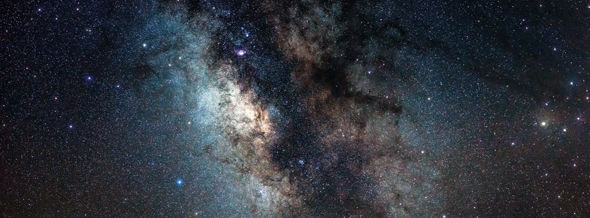Astrophysics BREAKTHROUGH: Scientists move closer to understanding secrets of our universe

IN a huge breakthrough for astrophysics, scientists believe that they have detected the first neutrino to have originated from outside our galaxy.
Neutrinos are invisible yet high-energy particles that are one of the fundamental ingredients of the universe.
Little is known about them due to the fact that they rarely interact with other particles apart from when they collide head on.
However, neutrinos may hold some secrets to the history of the universe as when they do collide with other particles, a chain reaction occurs that lets scientists trace the neutrinos back to their original source – thus unravelling some of the mysteries of the universe.
They often pass through Earth but because they are not influenced, they go undetected.
But now, using the IceCube observatory in Antarctica, an international team of scientists, led by Dr Matthias Kadler from the University of Würzburg, have detected the first instance of a neutrino from a distant galaxy known as PKS B1424–418 when it collided with particles on the ice.
PKS B1424–418, which is a blazar galaxy, has been subject to investigation from scientists for decades, but its shape changed between 2011 and 2014.
A blazar galaxy is an extremely bright galaxy that faces towards Earth and blasts light and matter towards us.
By analysing the neutrino, which was first detected in 2012, the team of scientists believe they will be able to understand what happened to the galaxy to make it shoot neutrinos this way.
The team say that this breakthrough in detecting the neutrino from a distant galaxy represents a “new era of astrophysics”.
More studies will now be carried out to better understand the neutrino, its origin, and hopefully the universe itself.
The IceCube observatory consists of a kilometre-sized ice patch in Antarctica that has sensors beneath the surface which record when a neutrino collides with particles on the ice, which is a very rare event.
Политика конфиденциальности | Правила пользования сайтом









